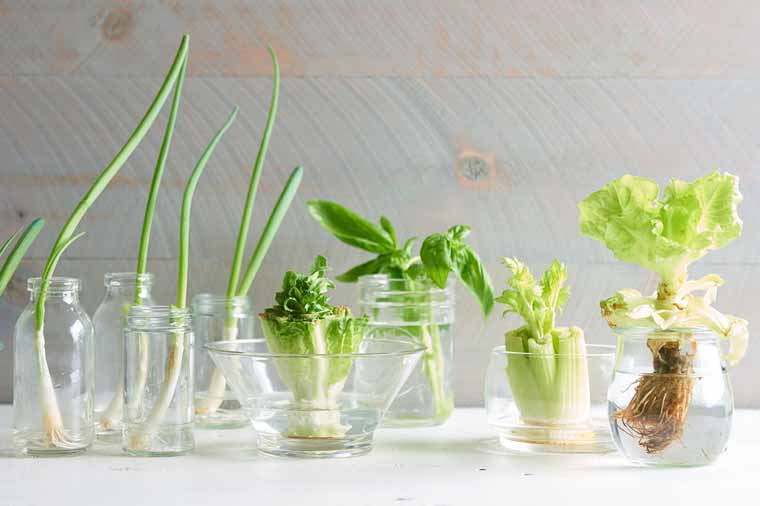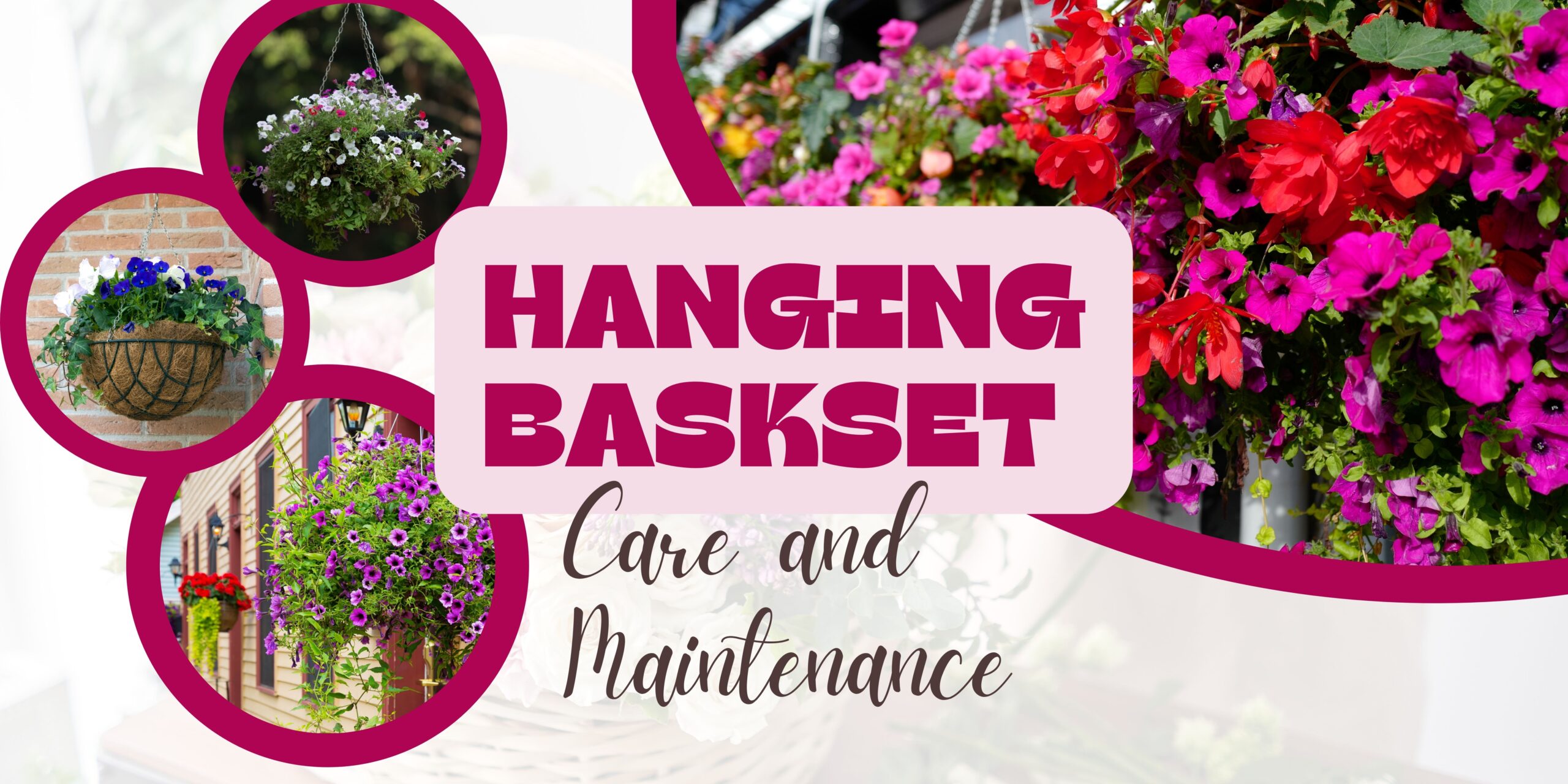Regrowing Veggies & Herbs from Scraps
Why Regrow Veggies
Less Waste : Perhaps the most obvious, if you are putting your kitchen scraps to good use then you are producing less waste.
Save Money : Regrowing vegetables can save money in two ways. First, you are getting a secondary use from a plant you’ve already paid for, doubling your yield without doubling your cost. And second, that double yield means you are also buying less produce from store OR buying less seed when growing your own.
Save Time : Some vegetables and herbs can take a long time to germinate and mature to the point when they can be harvested. By regrowing from an established plant, we can short cut the process and have harvestable food sooner. This is especially valuable when our growing season is so short.
Healthier Eating : By simply having a readily available abundance of fruit and veggies, studies have shown we are more likely to reach for healthier options.
Food Security : It is believed that food scarcity may become a real concern in the near future as we face increasing issues due to a warming climate and the extinction of biodiversity in our complex agricultural systems. By growing your own food, you will have the skills needed to help ensure food security for your family.
Teaching Your Kids : If you have children, you have a fun opportunity to teach them how our food grows, contributing to a generation of more self-sufficient, resilient humans and the future of our planet.
How to Regrow Veggies
Use Quality Plants : Not all purchased produce is created equal. Some grocery store produce originates from southern climates and may struggle to grow here. Most commercial grade produce is grown using pesticides or other chemicals which can remain present even within the new plant growth. Grocery store produce also tends to travel long distances and is older by the time it reaches your table. Older plants may have lower success rates. For the healthiest and tastiest results, choose locally grown organic produce when purchasing with the intent to regrow.
Know Which Part of the Plant to Use : Different plants will regrow from different plant parts. As a general rule of thumb you will want the part of the plant that transitions between above and below ground. This way there are both rooting and sprouting cells available to regenerate.
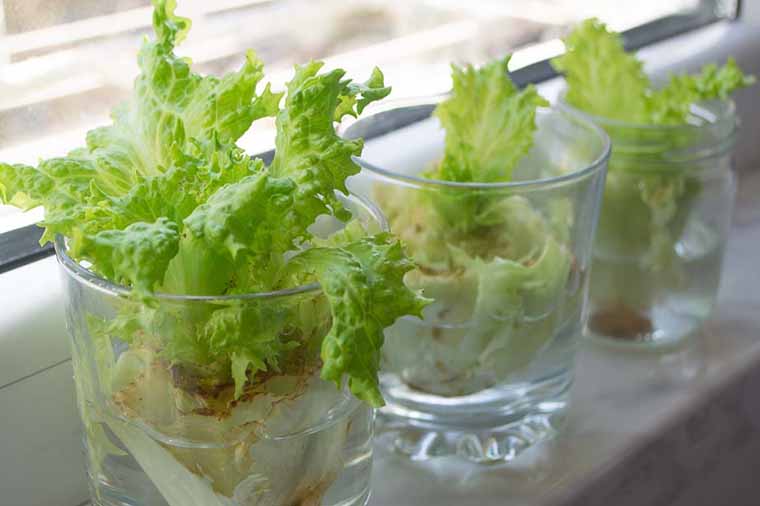
Head Lettuces, Bok Choi, Celery & Other Leafy Greens
Head form leafy greens, such as lettuces, celery and bok choi are some of the easiest scraps to regrow. These leafy greens will happily grow in a sunny window sill year round, so long as the window does not get too cold. They can also be transplanted to your garden during the growing season.
Part Used : The base.
How To : Cut off the plant’s base leaving 1 to 2 inches. Place it cut side up in a shallow dish, and then add 1/2 inch of water and refresh the water regularly. Once roots emerge, you can transplant to your garden by covering the roots and base with soil, but leaving the top of the scrap exposed.

Garlic, Onions, Shallots, Leeks & Scallions
Most bulbed vegetables can take significantly long to grow from seed, this is one vegetable where regrowing from an existing plant part can save you time. Methods can vary for the different types of bulbs, but all are fairly easy to regrow.
Part Used : The bulb.
How To : For soft bulbs, such as scallions and leeks, cut off the end with the tiny roots so you have a scrap about 1 inch tall. Place it root end down in water 1/2 inch deep. Be sure the water covers the roots, but not the top. Keep water fresh.
For segmented bulbs, such as garlic, use one clove. Place the clove in shallow water, root side down, with the top of the clove above water to sprout.
For mature bulbs, such as onions, plant directly into soil instead of water. Cut your root base about 1 inch thick, then bury the roots and base in soil, but keep the top exposed.
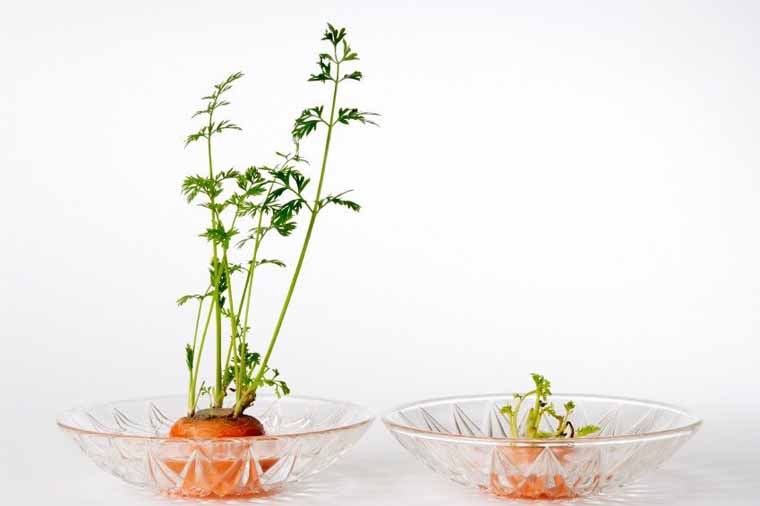
Carrots, Beets, Turnips, Parsnips & Other Root Veg
Root crops such as carrots, beets, turnips, parsnips etc will not regrow their vegetable root. However, you can regrow the leafy greens. These leafy greens are incredibly nutrient dense and would be a great addition to salads, sautes, smoothies or in juicing.
Part Used : The root tops.
How To : Cut off the tops, but leave a 1/2 inch of the vegetable root attached. Place the scrap in shallow dish of water, cut side down and leaf end up, and fresh greens will soon appear.
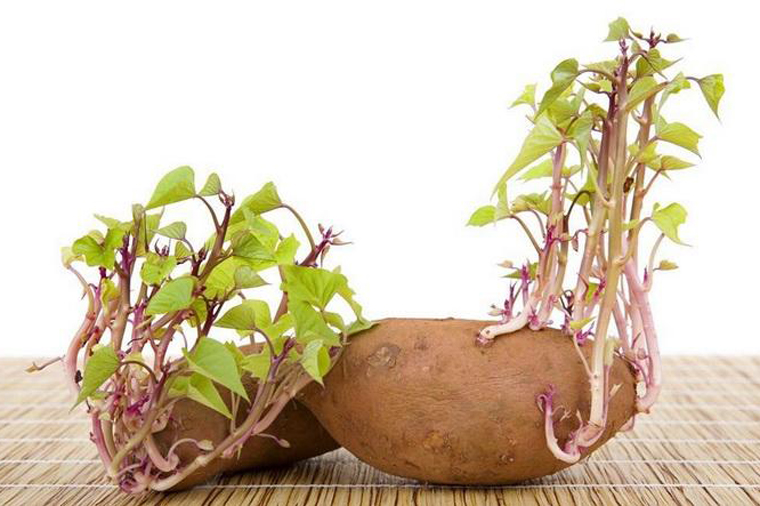
Potatoes
Have you ever left potatoes sitting too long in your pantry only to find they’ve sprouted. Older potatoes actually make great seed potatoes.
Part Used : The peel.
How To : Cut the potato into 1 to 2 inch cubes, be sure to include the peel with at least one eye. The eye of the potato is the part that sprouts if you let it sit for too long on your counter. Let the cubes sit for a day or two to dry before planting them directly in soil, the same way you would plant a seed potato.
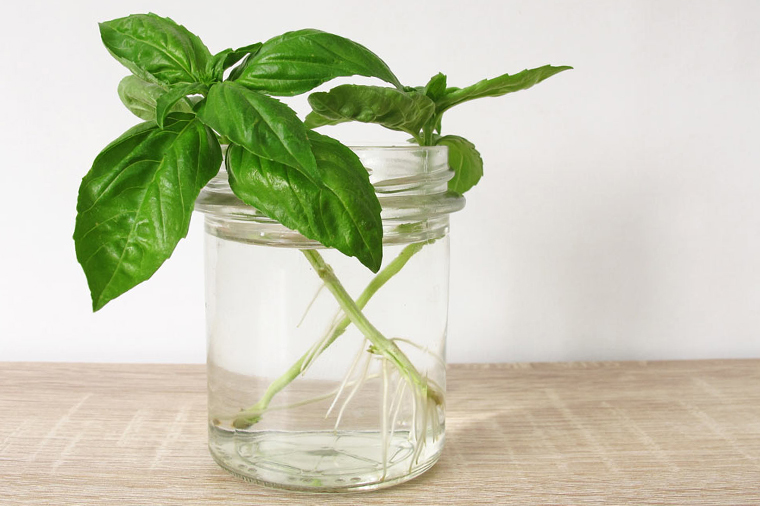
Basil, Mint, Cilantro & Other Herbs
Regrowing herbs is very similar to propagating common houseplants such as pothos. Many herbs will sprout roots from small nodules along their stems.
Part Used : The stem.
How To : Snip a length of the stem and drop it into a jar of water. Remove any leaves that would be submerged in the water. Once you see roots growing, you can remove the stem from the water and plant in a small pot soil.
 |
| 
